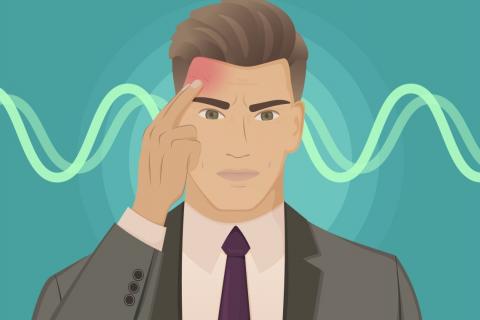
Havana Syndrome is a mysterious phenomenon that has captured the world’s attention since it first came to light in 2016. It refers to a series of unexplained health symptoms initially reported by U.S. diplomatic personnel stationed in Havana, Cuba. This set of symptoms includes, but is not limited to, severe headaches, dizziness, hearing loss, anxiety, fatigue, and cognitive problems, some of which have had lasting effects on the lives of those who experience them. What began as a handful of isolated cases soon morphed into not only a political, but also a medical enigma, spreading to other countries and affecting diplomats, intelligence agents, and other government officials in the United States and Canada, among others.
As the international scientific community seeks to unravel this enigma, research into Havana Syndrome has opened up a fascinating field of study into the possible mechanisms behind these symptoms. Theories range from sonic attacks and exposure to chemical agents, to psychogenic illnesses and the use of directed energy devices.
Now, a research team from the National Institutes of Health (NIH) has conducted an in-depth investigation into its origin and implication in the health of those affected over the course of nearly five years. To do so, they used the latest in imaging technology and detailed clinical evaluations on a select group of federal employees, who reported having experienced abnormal health incidents (AHI), characterized by unusual symptoms such as high-pitched noises and unexplained pressure in the head, followed by headaches, vertigo, cognitive difficulties, among others. Against all odds, the results recently published in two articles in the prestigious journal JAMA, reveal that no significant differences were found in brain structure detectable by magnetic resonance imaging, nor biological abnormalities in most clinical tests when compared to a control group of healthy individuals.
“Our goal was to conduct comprehensive, objective, and reproducible assessments to see if we could identify structural or biological brain differences in people who reported AHI,” said Leighton Chan, MD, chief of rehabilitation medicine and acting scientific director of the NIH Clinical Center, and senior author on one of the papers. “While we did not identify significant differences in participants with AHI, it is important to recognize that these symptoms are very real, and they cause significant disruption to the lives of those affected that can be quite long-lasting, disabling, and difficult to treat.”
Research does find serious symptoms such as post-traumatic stress and depression
To conduct their research, the team of scientists employed a variety of innovative techniques in evaluating more than 80 U.S. government employees and their adult family members, most of whom were serving in international assignments and had reported experiencing anomalous incidents of health (HIH). This group was compared with a set of healthy controls, consisting of volunteers with no reports of AHI but with work assignments of a similar nature.
During the study, participants underwent a complete series of evaluations that covered clinical, auditory, balance, visual, and neuropsychological aspects, as well as analysis of biomarkers in the blood. Additionally, they were subjected to various modalities of brain magnetic resonance imaging, with the aim of examining in detail the volume, structure and functioning of their brains.
The research team collected a variety of measurements and applied multiple methodologies and statistical models to analyze the data collected. This meticulous approach ensured high reproducibility of the results, demonstrating that the conclusions they reached were consistent and reliable, regardless of the number of times the subjects were evaluated or the statistical analysis of the information obtained.
The research team applied deep phenotyping techniques, that is, the detailed analysis of the observable and biochemical characteristics of individuals, to explore possible connections between clinically reported symptoms and results obtained through neuroimaging studies.
In the imaging phase of the study, MRIs were performed on average 80 days after symptom onset, although in some cases they were performed as early as 14 days after participants reported an abnormal health incident (AHI). Through a meticulous and rigorous approach, which ensured the reliability of the MRI metrics, the scientists were unable to find a consistent pattern of imaging abnormalities that would clearly distinguish between subjects with AHI and individuals in the control group.
Carlo Pierpaoli, principal investigator and head of the Laboratory of Quantitative Medical Imaging at the National Institute of Biomedical Imaging and Bioengineering qualifies that “The detectable difference between individuals with IAH and controls does not exclude that an adverse event affecting the brain may have occurred at the time of the IAH.”
“It is possible that people with an IAH are experiencing the results of an event that led to their symptoms, but the injury did not produce the long-term neuroimaging changes typically seen after severe trauma or stroke. We hope that these results will alleviate concerns about the association of IAH with severe neurodegenerative changes in the brain,” argues the senior author of the neuroimaging article.
Similarly, no significant differences were observed between individuals who reported experiencing IAH and control subjects regarding most clinical, investigative, and biomarker assessments, with the exception of some self-reported responses.
41% of participants in the IAH group met criteria for functional neurological disorders (FND) or had significant somatic symptoms
Individuals with IAH reported a marked increase in symptoms related to fatigue, post-traumatic stress, and depression compared with the control group. Forty-one percent of participants in the IAH group, from nearly all geographic regions studied, met criteria for functional neurological disorders (FND)—a group of common neurological movement disorders caused by dysfunctions in brain function—or had significant somatic symptoms.
FNDs are often linked to conditions such as depression, anxiety and elevated stress levels. The majority of individuals within the IAH group affected by FND met the necessary criteria for the diagnosis of persistent perceptual postural dizziness (PPPD), a disorder characterized by dizziness, sensations of non-rotational vertigo, and variable instability triggered by environmental or social stimuli, which cannot be attributed to another known neurological condition.
“The reported post-traumatic stress and mood symptoms are not surprising given the current concerns of many of the participants,” said Louis French, a neuropsychologist and deputy director of the Intrepid National Center of Excellence at Walter Reed National Military Medical Center and co-investigator of the study. “Often, these people have suffered significant disruptions in their lives and continue to have concerns about their health and future. This level of stress can have significant negative impacts on the recovery process.”
The study rules out the involvement of sonic or microwave weapons
The scientists conclude that, if an external agent was responsible for the observed symptoms, it has not left lasting or identifiable pathophysiological alterations using current tests. Furthermore, they suggest that the physiological indicators of such an external agent could have disappeared or be undetectable with the techniques and sampling scope used in this study.
As Robert W. Baloh, Professor Emeritus of Neurology at the University of California at Los Angeles (UCLA, USA), who was not involved in the study, points out in statements to Science Media Centre Spain, “Unlike previously published reports on smaller groups of subjects with Havana syndrome, they found no evidence of damage to the inner ear or brain. In addition to the size and depth of the study, other key differences from previous studies were the inclusion of an adequate control group and detailed statistical analysis. This, along with the recent combined report by US intelligence agencies concluding that there is no evidence of a sonic or microwave weapon, should reassure symptomatic employees that they did not suffer permanent brain damage. which should help in the recovery process“.
For his part, Dr. David Relman, a professor of microbiology and immunology at Stanford University who has been involved in previous research on Havana syndrome, said in an editorial published Monday with the study that interpreting the results of the brain scans as indicating that “nothing, or nothing serious, happened” in these cases would not be accurate.
Source: NIH and JAMA













